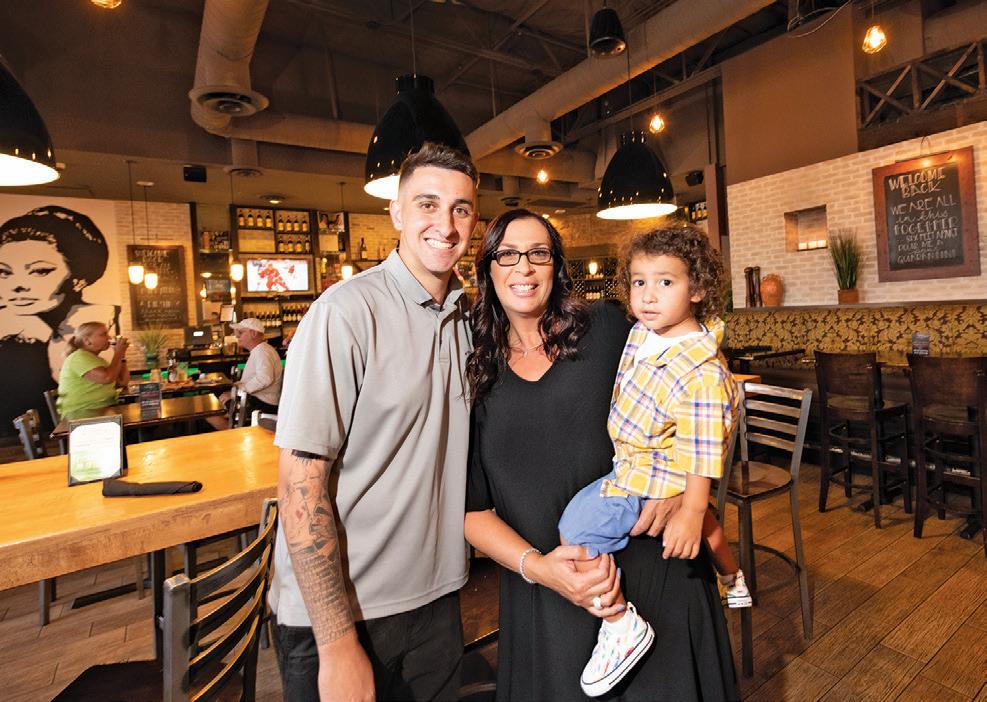ARTS & ENTERTAINMENT
SCOTTSDALE PROGRESS | WWW.SCOTTSDALE.ORG | AUGUST 30, 2020
25
Arts & Entertainment Scottsdale.org l
@ScottsdaleProgress
/ScottsdaleProgress
MusicFest gets high marks in arts study BY KRISTINE CANNON Progress Staff Writer
J
ust in time for the Scottsdale-based non-pro�it’s 30th anniversary, Arizona MusicFest was recently recognized as one of 10 “High-Performing Arts Organizations” as part of National Center for Arts Research’s SMU DataArts arts industry report. “The Alchemy of High-Performing Arts Organizations” studied 10 organizations from across the country with a track record of high performance, as well as 10 organizations that engineered a turnaround from low to high performance. “As we celebrate Arizona Musicfest’s 30th anniversary of serving Valley audiences, students, young musicians and lifelong music learners, we are proud and inspired to know that our success – both artistically and administratively – is not only appreciated by the local community, but also recognized on the national stage,” said Arizona MusicFest Producing Director Allan E. Naplan. “While the research was conducted prior to COVID-19, the release of the report is now intended to aid the industry as it faces unprecedented challenges,” Naplan said. The paper aims to answer three questions: How does an arts organization become �inancially stable? How do high-performing arts organizations maintain their magic? And what does it take for a struggling organization to turn its fortunes around and become high performing? “Arizona Musicfest was identi�ied as ‘high-performing’ due to our exemplary achievement in various �inancial and operating metrics when compared to other arts institutions of our size,” Naplan explained. The paper is the �irst of its kind from SMU DataArts.
Allan E. Naplan is the Executive and Producing Director of Arizona MusicFest, a secular non-profit arts organization based in Scottsdale that was recently recognized as one of 10 “High-Performing Arts Organizations” in National Center for Arts Research’s SMU DataArts arts industry report. (Arizona MusicFest)
“Their observations link what has often been a series of separate conversations on artistic excellence, community orientation, and �inancial and marketing strategies,” said Will Miller, president of the Wallace Foundation, which commissioned the paper. “The nonpro�it arts sector is facing its worst crisis in a century,” Miller said. “The COVID-19 pandemic has halted most performing and visual arts organizations in their tracks, shutting off the �low of earned revenue from ticket sales and weakening fundraising. “Amidst these sea changes, we can still usefully mine the past for clues to the future by asking questions like: What did healthy arts organizations do to get that way – and how did organizations that were in some distress turn around their fortunes and become healthy?”
Arizona Musicfest, a nonpro�it in northern Scottsdale, was founded in 1991. MusicFest had just wrapped its 2019-20 festival season when the pandemic began in Arizona. The season included 27 performances that took place at various venues throughout Scottsdale and Phoenix, including Highlands Church, La Casa de Cristo Lutheran Church, the Musical Instrument Museum, and Pinnacle Presbyterian Church. “It has grown in amazing ways over the last many, many years, but at the core was this was an af�inity for classical music and to bring great instrumentalists to north Scottsdale,” Naplan said. Naplan calls Arizona Musicfest’s growth a “very strategic progression.” “We’ve been bringing in major celebrities now for the last �ive years or so,” he said, estimating that this season’s attend-
ees topped 30,000. “Our budget is $2.7 million, so we are a major destination cultural destination of the Valley.” According to Naplan, 60 percent of Arizona Musicfest’s budget comes from ticket revenues and 40 percent from philanthropy. “And it’s because people are engaged in our mission, which is to provide music education at no charge to area schools, really exceptional opportunities for young musicians to perform, to compete and to get scholarship funds,” he said. Naplan estimated that about 6,000 kids would get involved in the nonpro�it’s music education and youth performance, with about 3,000 adults and seniors engaged in the nonpro�it’s lifelong learning programs. Arizona Musicfest has also provided over $30,000 in free instruments to area schools and has contributed over $90,000 in college scholarships to local Valley teens pursuing collegiate degrees in music performance. “Our mission is really resonating with the community,” Naplan said. All proceeds from Arizona Musicfest’s season go toward the nonpro�it’s educational programming, including its Young Musicians program. The Young Musicians Competitions, which include piano, voice, strings, chamber ensembles, brass, and woodwinds, was added to the annual Arizona Musicfest event 20 years ago. “At the very beginning, it was the chamber concerts, but music education and youth performance were followed soon after because this was the commitment of those people that started [Arizona Musicfest] and those that followed that they wanted to give back to the community through music education and celebrating and rewarding young musicians,” Naplan said. “It’s a major part of our history.” Information: azmusicfest.org.




